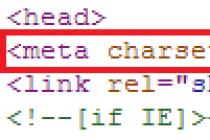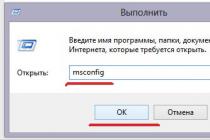Any household electrical appliances that work in home wiring are created by manufacturers to be powered from a harmonic sine wave with a voltage of 220 or 380 volts.
Sophisticated electronic technology uses direct current rectified by special blocks.
When the shape and amplitude of the supply voltage changes, then it greatly affects the quality of work of household consumers, reducing their resource.
Serious attention must be paid to the protection of household appliances:
- perform high-quality with your own hands or by involving electrical specialists;
- ensure reliable operation;
- apply in premises of increased danger;
- use, excluding the impact of power failures from emergencies from the power system;
- take care of one capable of withstanding lightning discharges that cause enormous harm to the building and residents;
- counteract the household network using devices with impulse overvoltage protection of SPD.
What current pulses can occur in a household home network
The nature of the current flow through the equipment is taken as the basis for the design. electrical appliances and shown in the picture below.

The ideal sine wave and the direct current rectified from it ensure nominal operation. It can be disturbed by an impulse coming from:
- lightning discharge;
- overvoltage of the power grid by emergency modes.
The characteristics shown in the lower graphs are of a general nature. They change on a case-by-case basis. However, it should be noted right away that the lightning impulse is much larger in magnitude and 17 times longer in time (350/20 = 17).
The power of lightning is much higher than the impulse of the usual overvoltage of the network, it has increased destructive capabilities in comparison with it.
Therefore, to eliminate the aftereffects of lightning, specialized impulse type protections are used.
Let's reduce them to four points:
- Impulse protections are designed to be in readiness for operation when under the rated voltage of the network. In the event of overvoltages from accidents, they can be damaged, they themselves require protection.
created for the operation of sinusoidal or direct currents. It is not adapted to work under a lightning impulse discharge.
SPD protection by automatic devices is prohibited. For her, only fuses are chosen. - According to the conditions of safe operation, it is better to use the housing of the first class SPD with a one-piece design without additional modules of a removable type.
- When choosing surge protection devices designed to handle lightning currents of more than 20 kA with pulse ratios of 10/350 milliseconds, it is necessary to focus on arresters.
- The SPD should be installed in an electrical panel with metal case, which most meets the requirements of fire safety.
Let's analyze it using the example shown in the picture below.

Electric energy can be supplied to the house through an overhead line equipped with:
- self-supporting insulated wires SIP - VLI;
- ordinary wires without an outer layer of insulation - overhead lines.
The presence of a dielectric layer on the conductive elements of the overhead line reduces the impact of a lightning discharge, affects the design of a working SPD and its connection diagram.
When the house is powered from VLI, a grounding system is created according to the TN-C-S scheme. The SPD is mounted between the phase conductors and the PEN. The place where PEN splits into PE and N wires at a distance of 30 meters from the building requires additional protection.
The presence of external lightning protection installed on the house, the supply of metal communications of engineering systems affect the electrical safety of the building, the choice and connection diagram of the SPD.

Consider four options for possible schemes.
Option 1
Conditions
- without external lightning protection;
- with missing metal communications built into the house;
Solution
In such a situation, the probability of a direct lightning strike into a building is sharply reduced:
- insulation of VLI wires;
- lack of lightning protection and external metal open conductive parts.
Therefore, it is quite sufficient to protect against overvoltage impulses with a shape of 8/20 μs for current.
An SPD with a combined protection class 1 + 2 + 3 in a single housing of the DS131VGS-230 brand is quite suitable. Moreover, its protective function to eliminate lightning current pulses of the form 10/350 μs with an amplitude of up to 12.5 kA will hardly be used.
The current swing from overvoltage pulses can be selected from the range of 5 ÷ 20 kA, taking into account the period of thunderstorm days. It's easier to stop at the maximum value.
Option 2
Conditions
Electricity is supplied by VLI. Building:
- without external lightning protection;
- with metal water or gas pipelines built into the house;
- earthing system diagram TN-C-S.
Solution
Compared to the previous case, a lightning storm discharge through a pipeline with a force of up to 100 kA is possible here. This current inside the pipe will branch out at both ends at 50 kA. From our side of the house, this part will be divided by 25 kA into a ground loop and a building.
The PEN conductor will take its share of 12.5 kA, and the remaining half of the pulse of the same strength through the SPD will penetrate into the phase wire. Therefore, it will have to be suppressed.
It is quite possible to choose the same SPD model as before, but its ability to protect against a lightning impulse with a shape of 10/350 μs and a swing up to 12.5 kA will be absolutely necessary.
Option 3
Conditions
Electricity is supplied by VLI. In a buiding:
- there are no metal communications built into the house;
- earthing system diagram TN-C-S.
Solution
A lightning discharge of 100 kA enters through the lightning rod, is divided into two streams of 50 kA each into the grounding device and the electrical circuit of the building.

On the PE bus, the conductor and the 25 kA phase wire are re-branched into the PEN. Thus, a pulse with a shape of 10/350 μs and a force of 25 kA will flow through the SPD. With such parameters, it is required to select protection.
Option 4
Conditions
Electricity is supplied by VLI. At the building:
- external lightning protection is mounted;
- there are metal water supply lines built into the house;
- earthing system diagram TN-C-S.
Solution
A lightning discharge of 100 kA after the lightning rod in two streams of 50 kA diverges to the ground loop and electrical circuit input device. The second stream will also be divided equally: 25 kA spreads through the water supply pipes, and the next 25 are also divided by 12.5 kA into a PEN conductor and a phase wire through an SPD. It can be chosen in the same design as in the second option.
Features of the choice of SPDs when powered by VLI
In the four analyzed examples, the VLI with self-supporting insulated wire is taken as the basis for the power supply of the building. They have a zero break, and, therefore, the appearance of a line voltage of 380 instead of a phase voltage is unlikely. Therefore, the choice of an SPD can be limited by the maximum mains voltage.
Taking into account the workloads in the four considered options for SPDs, it is quite acceptable to mount the latter in metal cabinets inside the house. Taking into account the small dimensions of the building, it is permissible to install one SPD device between the phase and PEN potentials of the conductor.
Option 5
Condition
Electricity is supplied to the building by overhead transmission line with bare wires.
Solution
In such a situation, there is a high probability of a lightning discharge in the overhead line wires, and the TT grounding system is used at the house.

It is required to create protection against penetrating impulses not only from phase conductors relative to ground, but also from zero. The latter is recommended in most cases, but may not apply due to local conditions.
When connected to open wires of overhead lines, the design of the branch affects the electrical safety of the house. Its implementation is possible:
- cable;
- self-supporting insulated wires SIP, as on VLI;
- open wires without insulation.
With an air branch, smaller risks are provided by individually insulated self-supporting insulated wire wires with a cross section of 16 mm sq and creating a gap relative to the phase and neutral conductors. In them, a direct lightning strike is practically unrealistic, but it can fall into the place of cutting near the insulators at the input. Then 50% of the strength of the lightning discharge will appear on the phase.
This case must be excluded:
- the SIP plant inside the input device;
- connecting the PE bus of the shield to a grounding device with blocking the possibility of a lightning strike in this place from the outside of the building.
Without the complex fulfillment of these conditions, it will be necessary to install an SPD of 50 kA 10/350 μs, and when done, the lightning current into an open phase conductor with a force of 100 kA will be divided into two flows, of which 50 kA will go towards the building to the input pole. When he is the last on the line, then the entire discharge will enter the house, and if the overhead line is laid further, it will split into our structure and go to others.
These conditions are decisive when choosing an SPD based on the strength of a lightning discharge.
On an overhead power transmission line with open wires, a zero break is likely, which requires the choice of an SPD for a voltage of up to 0.4 kV, and not 220 volts.
When installing the SPD, one should take into account the manufacturer's recommendations set forth in the technical specifications for connection diagrams in different grounding systems, their features. Otherwise, more harm than good is possible from the use of protection.
The role of the fuse in the protection of SPD
Thunderstorms usually occur when there is a squall wind that can cut off the PEN conductor of the overhead line during or before a lightning strike. A phase current will flow through the working zero.
When a lightning strikes an open phase wire, we have an SPD, through which a thunderstorm impulse and a current accompanying a PEN break will flow through the chain: fuse, arrester, PE bus and ground loop.
All these elements have a certain electrical resistance, which reduces the amount of current flowing. It can be calculated, determined by Ohm's law, the value of the follow current, compared with the characteristics of an SPD. If they allow operation at a higher value, then the fuse can be omitted.
The company "Electromir" explains with its video why it is necessary to install an SPD in any house.
(10 votes, average: 5 out of 5)The uninitiated are puzzled: why some kind of overvoltage protection in the network? Electricians-practitioners for sure with their own hands have repeatedly eliminated the consequences of such a phenomenon. So that the text is not gibberish for a layman, let us explain the nature of such leaps.
Causes of abrupt pulses in power supply devices:
- Lightning strikes directly to electrical systems (generators, power lines, transformers). Moreover, lightning can hit nearby. These are lightning overvoltages, their duration is about several tens of microseconds;
- Switching in the system (necessary for the stable operation of the network economy) often leads to switching overvoltages. Their duration is longer - several hundred microseconds. It depends on the impedance (AC impedance, resistance + reactance) of the switched circuits. But they do not inflict catastrophic destructions like thunderstorms;
- Certain specific operational states of electrical equipment. Basically, only the skill and coordinated work of energy dispatchers can minimize the duration of the so-called temporary overvoltages. Without delving into the physical jungle of processes, let's say that, unfortunately, it has not yet been possible to completely avoid them. The duration can reach (according to some sources) 100 seconds.
All of them, despite their nature and parameters, are dangerous, primarily for electronic components home appliances.
Possible consequences
Timely overvoltage protection of electrical networks helps to avoid complete disruption of both devices and parts of the distribution system. Lightning discharges are the most harmful to them. The frequency of lightning strikes and the magnitude of the discharge current depend largely on the area. But the method of technical execution of the electrical system is also important.
It is possible to completely protect a network section or a group of consumers from impulse or constant voltage increases, but not cheap. This is how power engineers balance between operational and economic "scissors". And all over the world.
Failure of the TP or burnt-out power transmission lines will not immediately fall on the consumer's shoulders financially. For a while without light, and all the work. It's a different matter if after the jump the computer, refrigerator "died" ...
How to minimize losses
By breaking through the insulation of components, a voltage spike can cause short circuits. Fires in electrical installations are not uncommon, and it will not take long to lose a house, except for a direct danger to life. Therefore, each electrical installation (all the electrician from the shield to the light bulb, it is) is protected from voltages that are increased in excess of the norms.
Overvoltage protection of a home network is carried out in several interconnected stages, necessarily in a complex and in several ways.
The first is a lightning rod, or rather a lightning rod. High-rise buildings are already equipped with lightning protection for the house as a whole, except for each individual apartment. Individual house: a lightning rod is the concern of the owners, with a reliable grounding tested by an electric laboratory and arresters of various designs.

Lightning strike into a lightning rod in a private house
But lightning is not the only reason for silent TVs. The "zero" burned out - the voltage jumped in some phases due to their imbalance. One one hundred percent guarantees against all "electronic troubles" - disconnection from the network. But how often do we use it? And it is far from always possible to turn off the power to the same refrigerator in time.
Home network security methods
Thunderstorm protection is discussed above. But she will not give a full guarantee against the failure of home helpers. So it is with other types of voltage surges. The reason is the "tenderness" of microelectronic components of complex household equipment.
Conventional protection devices: "automatic machines", RCDs, (not to mention "plugs" - fuses) simply do not keep up with the surge of volts. This prompted both "home-made" radio amateurs and professionals to develop new, fast-operating devices.
State-of-the-art overvoltage protection in the network - a new generation circuit - disconnects the load instantly. 4 circuit solutions, eliminating the need to repair or purchase an SBT in case of changes in the quality of the supplied electricity: SPD, stabilizers, voltage relays and a sensor increased voltage(DPN) + RCD.
- ... The effect is achieved by using semiconductor components. The performance is orders of magnitude higher than traditional electromechanics. Such a circuit breaker (SPD) is differentiated into 3 classes (according to IEC standards):
- Protects against direct and indirect lightning strikes and compensates for the potential of the entry point into the structure. Dislocation of the device at the input, more often the main switchboard of the building.
- Eliminates the inevitable side effects of lightning strikes and extinguishes residual voltage. Installed after class I surge protection devices.
- Placed between auxiliary switchboards and end users, it is possible in sockets. For the most sensitive consumers, their own SPDs can be installed.
When choosing and installing SPDs with a lack of special training, it is best to contact specialized organizations or consult an intelligent electrician-practitioner.

Surge protection device (SPD)
- Stabilizers do not require installation. Below 150 or above 260 V? - block and disconnect from the network. Has the tension returned to normal? - turn on again. Displays, which are supplied with many models, will help to "monitor" the status.

Voltage surge protection
- ... Appliance → relay → socket - this is how the voltage relay switches on. There are relays installed on switchboards and guarding the entire apartment "electric power" in bulk.

Varieties of voltage relays
- DPN + RCD: the overvoltage sensor, with an invalid parameter, gives a command to the residual current device actuator. The network is de-energized.
All protector assistants are mounted on a DIN rail of the shields.
In contact with
Electrical breakdowns occur quite often. household appliances, because any electrical unit, when created, is calculated to work with a certain level electricity, i.e. on specific indicators of strength and voltage in connection networks. Therefore, if these standards are exceeded, an emergency situation may occur.
The use of expensive home appliances, aggressive natural and atmospheric phenomena, not too much high level the laying of power lines makes it vital for the owners of apartments and houses to take measures to protect against overvoltage in power grids in a private house and minimize possible consequences.
Where does the overvoltage come from?
The planning and construction of many high-rise buildings a couple of decades ago was carried out without aiming at today's variety of household electrical equipment: microwave ovens, multi-chamber refrigerators, high-power irons and other electrically powered devices. Therefore, the highs of electricity consumption in the mornings and evenings have a detrimental effect on the operation of the entire power grid in any home.
Electricity flowing through a cable or wire that is unable to withstand such a load contributes to their abnormal heating during the daytime and cooling in the evening. Due to the laws of physics, the conductor weakens, because it becomes wider and narrower. Contacts in the dashboard on the ground floors or in a single input-distributing device in the house noticeably weaken. Also, the zero contacts can burn out, which leads to a voltage drop from 110 to 360 volts on all floors, above the floor with burned out contacts.
Overvoltage in the power grid can occur as a result of a lightning discharge hitting a power line, substation or elements of a house, while the current strength is simply enormous, about 200 kiloamperes. When lightning strikes the lightning rod and further passes along the ground loop, an electromotive force arises in the conductive materials, measured in kilovolts.
Welding work or the simultaneous switching on of electrical appliances by many neighbors or the connection / disconnection of a powerful consumer can also cause a sharp voltage surge. To protect expensive electrical equipment and the entire private house, overvoltage protection in the network is necessary.
Features of the protection of home wiring
The organization of protection against the emerging high voltage is one of the key issues when laying the electrical network in a residential building. It is carried out using special transformers and network filters. In many houses, floor panels are installed circuit breakers, which protect against electric currents during short circuits and temporary overloads.
When a high load is possible, all devices that protect networks from overvoltage must have devices for auto-shutdown and switches that respond to changes in current indicators. As a rule, the most reliable protection against such surges is placed on the input power wire, since it is this wire that experiences the greatest impact during peak loads.
The overvoltage protection circuit for a home electrical network is simple and multi-level. Simple - it is represented mainly by an overvoltage relay in the floor panels, and a multi-stage (combined, protecting both from household voltage surges and from impulsive ones, during thunderstorms) - an SPD, i.e. surge protection devices. Such devices are most often found in private homes.

Note! Electronic devices fail due to both high and low voltage in the network (for example, refrigerators are hard to start, which negatively affects their further operation).
The insulating layers of household power grids are designed, as a rule, for standard 220V, therefore, if the voltage rises many times, a spark jumps in the dielectric layer, which can provoke an electric arc and further ignition.
In order to prevent negative consequences, the following protections are applied, functioning according to the following principles:
- with a sharp unplanned increase in voltage, the electrical circuit in the house or in the apartment is turned off;
- output of the obtained excess electrical potential from electrical appliances by transferring it to the earthen circuit.
If the voltage rises slightly (for example, up to 380 volts), various stabilizers come to the rescue. However, their protective capabilities are rather limited - they are more designed to maintain the specified operating values in power grids.

When designing protection for a private house, various design solutions and their technical characteristics are considered. It is necessary to take into account the principles of formation of the base of overvoltage arresters (OPS). For example, gas-filled arresters, after the pulse has passed, pass through themselves the so-called. follow current, the voltage of which is comparable to a short circuit. For this reason, they themselves can be a source of ignition and cannot be used for protection against electrical breakdown.
For home networks, a varistor protection device (semiconductor resistors) is most often used - rheostats made of varistor "tablets" from a mixture of oxides of zinc, bismuth, cobalt and others. During normal operation of the electrical network, such a circuit breaker allows microscopic leaks, and when a pulse of increased voltage passes, it is able to instantly switch to the "tunnel" mode and "release" more than a thousand amperes in a very short period of time, since the resistance on this device decreases with increasing current strength, after which there is a quick return to standard "combat readiness".

Resistance classes of electrical wiring
All electrical appliances in residential buildings are divided into four main categories, depending on the maximum withstand overvoltage:
- IV category - up to 6 kilovolts;
- III category - up to 4 kilovolts;
- Category II - up to 2.5 kilovolts;
- Category I - up to 1.5 kilovolts.
In accordance with these categories, a protection system is built, which is abbreviated as ouzo (residual current device) with overvoltage protection, for marketing purposes they are most often called limiters, other names are also used. Limiters are mounted in the direction of movement of a possible impulse. So, in the section from the input panel there is a 6-kilovolt impulse, in the first zone it is reduced by the overvoltage limiter to 4 kilovolts, in the next zone it drops to 2.5 kilovolts, and in the residential area with the help of an SPD of category III, the impulse potential is reduced to 1, 5 kilovolts. Protection devices of all classes operate in a complex, consistently lowering the potential to normal values, which the insulation of household wiring can easily cope with.
Important! In the event of a malfunction of at least one of the links of this protective chain, an electrical breakdown in insulation may occur, which will lead to the failure of the final electrical device. Therefore, it is necessary to periodically check the serviceability of each element of the residual current device.
The main devices of the protection system
One of better ways save the power grid from voltage surges - installation of a stabilizer suitable for technical specifications... These are not cheap devices, and they are not always used, since the voltage in the networks is already quite stable.
Voltage monitoring relays also help eliminate instability in the network. In the event of a break in the zero core and a short circuit in sagging cables, such a relay is able to turn on protective functions even faster than the stabilizer, it takes only 2-3 milliseconds.

Such relays are very compact - they require less space for installation than stabilizers, they are easily installed on a simple din-rail, cables are connected elementary (unlike the installation of stabilizers, when they are forced to wedge into the power grid or install a special box for it). Stabilizers are noticeably buzzing, so it is undesirable to install them in residential premises, but the relays work almost silently. In addition, electrical potential control devices consume very little electricity. The price for such relays is several times lower than those for stabilizers.
The principle of operation of the monitoring relay is that with a constant supply of electric current, the device determines the potential difference and compares it with the permissible values. If the readings are normal, the keys remain open and the current continues to flow through the network. If a powerful impulse passes, the keys are instantly closed and the power supply to consumers is cut off. This quick and unambiguous response helps to ensure the safety of all connected appliances.
Additional Information. Return to normal mode occurs with a certain delay, regulated by a timer. This is necessary so that large electrical appliances, such as refrigerators, air conditioners and others, turn on in compliance with the rules and technical settings.
The relay is connected via a phase cable, while the null cable is included in the internal circuit for power supply.

There are two ways: end-to-end connection (direct) or using a contractor for communication. It is optimal to connect the relay mechanism before connecting the meter, which will ensure its overvoltage protection. However, if there is a seal on the meter, you will have to mount the relay behind it.
Surge voltages in the electrical network of private houses occur due to thunderstorms with lightning or switching surges. For the safety of the wiring, special SPD devices are used. As a rule, these are non-linear overvoltage arresters (SPD), stabilizers and potential control relays. Of course, the arrangement of such a system is a costly event, but its cost is much lower than expensive electrical appliances.
Video
Everyone knows perfectly well that in the house or office there is an electrical panel through which household appliances receive power. However, most often the equipment at substations is old, and the wiring in the house may not be new, so household electrical networks are not designed for the constantly increasing power of devices in the room.
All equipment in your home is designed to operate from a 220-230V network. But in reality, the voltage in the network can "walk" in the range of 140-290V. And each surge, that is, overvoltage or undervoltage, poses a danger to your household appliances, which can simply burn out. Therefore, it is almost an indispensable element of any home network. But more often than not, people do not think about it, and when a power surge occurs, the equipment simply burns out. And under warranty, burned out devices as a result of a power surge are not repaired, because warranty service possible only if the device was operated in accordance with the technical requirements (voltage 220V).

Will traffic jams or automatic machines save?
If you still have plugs in your shield, change them as soon as possible. At a minimum, you need to install machines that can save the wiring from exceeding the current in the network. It is the current strength. Unfortunately, most machines cannot provide protection against 220V voltage surges for the home. Please note that machines usually write: 25A or 40A. This means that an automatic machine designed for 25A (namely, these are most often used in apartment shields), will automatically cut off the network when the current in the network reaches 25 Amperes. However, for example, it will freely pass the voltage at 380V. It will also pass a higher voltage, and only when the current strength reaches 25A, the machine will cut off the electricity supply. By that time, the household appliances in the house have already burned out.

Ways to protect against voltage surges 220V for home
One of the protection options is a special surge protection device in the form of a surge protector. This is the cheapest device, which is a fuse, it simply burns out during a power surge, but at the same time it saves both the wiring and household appliances in the house. However, in the event of a voltage drop, such a device from voltage surges does not work at all. Low voltage is also harmful to household appliances.
Therefore, it is appropriate to use voltage stabilizers for the home, which today represent the most effective means of protection. They are multi-layered instrument protection systems, and they fix fluctuations over the years.
What are voltage stabilizers?
These are devices that keep the voltage in the house constant and unchanged. In this case, the input voltage (up to the stabilizer) can "jump" from a low value to a high one. Household appliances in the house do not feel any interference, impulses in the network and drops at all due to the fact that the stabilizer "filters" all this interference.

These devices can be used in household and industrial power grids with a voltage of 220 and 380V. Thanks to this device, residents and manufacturing companies can save money on replacing equipment or parts for it that have become unusable due to voltage surges. One emergency jump - and the stabilizer abnormally disconnects the network from external source which is unreliable. As soon as the voltage stabilizes, the device feeds it back to the internal network.
Setting protection
If you have at least a little experience with electrical equipment, then you can make the installation of protection against voltage surges 220V for your home yourself. The process looks like this:
- Open the terminal box to access the mounting screws.
- Thread the cable through the rubber grommets of the shoe, secure the second cable with screws. Pay attention to the diagram that comes with the stabilizer. The connection of the wires should be carried out according to this scheme.
- Tighten the screws firmly. The contact on the terminal block must be of good quality. It is very important. If the contact is poor or the contact area is small, then this will not allow the full power to be removed from the device. This will cause the gimbal to malfunction. And in general, from time to time you need to look in and tighten the connection screws.
- Connect the wires and close the box.
- Turn on the introductory machine.
- Flip the power switch from the "Mains" position to the "On" position.

As you understand, there is nothing difficult in installing a voltage regulator. This is an extremely simple process and shouldn't take long. No permissions or documents are required to install it.
Model rating
Completely different devices are sold on the Russian and European markets. For example, ZUBR and similar things are generally absent in Europe. Manufacturers do not even produce voltage relays, because they are simply not needed there. Because of High Quality equipment in substations, the nightmare called "neutral break" can be eliminated altogether. This is possible in Russia and Ukraine.
Let's start our review with a popular model.
Relay ZUBR
This is a fairly popular model of Ukrainian production, which, as expected, is in great demand in Ukraine, but it can also be found in Russia. The manufacturer gives a 5-year warranty for this device. Judging by the reviews, ZUBR voltage relays with an index of 25D are designed for 25A, do their job well and maintain a stable voltage in the network quite accurately. There are models for more loaded networks, but popular household options have an index of 25 and 25T (with better thermal protection). One of the benefits is low price... On the Russian market the cost varies within 1,300-1,700 rubles.

Module AZM-40A from the "Resanta" company
Resanta is a Chinese manufacturer that has become very popular on the Russian market. Its cheap products are in demand, in particular, the AZM-40A module.
- The price is around 500 rubles.
- Lack of any controls. Due to the absence of any "knobs", the relay cannot be configured for incorrect operation. Although this suggests some drawbacks.
- Wide voltage range. According to the specification, this module operates in the range of 170-265V and does not turn off the power supply if the voltage is within these limits. And these boundaries can also negatively affect the technique. And after all, there are no regulators here either, so there is no way to influence the operation of the device.
- Low performance. The device stops supplying voltage for 1-6 seconds. It is difficult to understand why there is such a large spread. If the relay does not work in 1 second, then all the equipment in the house will have time to burn out.
- Short delay before turning on. If the voltage "sags" and the relay works, then it will supply voltage after 2-3 minutes, but this is not enough. Of course, this is not important for household appliances, but not for a refrigerator. For refrigerators, the delay before switching on should be at least 5 minutes.
- Dimensions. The device is large and clumsy, takes up a lot of space, but these are trifles.
This is a cheap budget device that can provide 220V surge protection for the home, although it is far from the most reliable.
RN-111M from Novatek-electro
The manufacturer Novatek inspires confidence. This is a serious company that makes good equipment, including voltage relays. The RN-111M model has certain advantages:
- Very high performance (0.2 s). Compared to the response time range of the previous relay (1-6 seconds), RN-111M turns off the power at lightning speed.
- Wide range for adjusting the lower and upper voltage limits. It is also possible to set the reclosing time.
- Digital indicator showing operating mode and values.
The disadvantage is that the load capacity is only 16A, which is very small for an apartment. Therefore, it is recommended to additionally use a contactor and a circuit breaker to protect the relay. As a result, this will result in additional expenses, and the entire structure will cost 2,500 rubles. Also, this company has a RN 113 model with a loading capacity of 32A. However, the price there is much higher, and 2,500 rubles cannot be dispensed with. But, given the advantages of such a module, you can overpay a little money. You can safely buy the relay PH 113 from Novatek. This is in the event that you could not find the model below. We also recommend paying attention to the Volt Control circuit breakers from this company, which also boast reliability, the ability to adjust voltage ranges and fast response.

Voltage monitoring device UZM-51M from the company "Meander"
The St. Petersburg company "Meander" makes industrial automation, which today is one of the most efficient and reliable.
Advantages:
- Very wide adjustment range for low (160V) and high (280V) values.
- Very short response time of only 0.02 seconds. None of the household appliances will have time to feel the power surge.
- The load capacity is 63A. This is enough for a huge apartment with the most powerful household appliances.
- Additional varistor overvoltage protection, which "eats" impulses with an energy of no more than 200 J.
- Small size and no need to buy additional items.
- Price. The cost on the market of such protection against voltage surges is in the region of 2,000 rubles.
If you find this device, feel free to buy it. But you shouldn't limit yourself to them. There are other interesting proposals as well.
Relays Tessla D25 and D25T
Both modules will cost only 1,000 rubles, and maybe even cheaper. They are designed for a current of 25A and a network power of 5.5 kW. The upper voltage limit is adjustable - from 240 to 270V, the lower - from 120 to 190V. The Tessla voltage relay with the T prefix has thermal protection, so it will cost a little more. Both modules are popular in Ukraine, but they are also sold in Russia.
This list can be continued for a very long time. However, these models will suffice. All of them are available on the market and are extremely easy to install.
Uninterruptible Power Supplies
These devices are batteries that first store energy and then release it if the voltage goes out. A modern UPS can perform protective functions against network overloads and save equipment by stabilizing the current strength.
Most often, such devices are used in offices, but they also have a place in apartments. However, the cheapest UPS is not able to protect the wiring and appliances in the house. In the event of a power surge, it will burn out, as well as the other consumer electronics... However, you can choose a reliable UPS with overload protection and large capacity... As a result, during a power surge, household appliances will not only not feel the power surge, but will not even turn off, since they will receive stable and even power from the UPS.
Which is better: UPS or stabilizer?
Stabilizers are special ones that are most reliable to use. Their only purpose is to protect network wiring and household appliances. Batteries have a slightly different purpose - they provide power to household appliances (usually computers or boilers) for some time, which allows, for example, to turn off the computer safely and save data.
Also, stabilizers are much cheaper, because they do not have expensive energy accumulators, which the UPS must have. Well, and most importantly, cheap UPSs do not protect equipment from an increase in voltage, but they work when it goes down. Ideally, you need to use a reliable stabilizer in conjunction with a source uninterruptible power supply... The first will turn off the voltage supply to the apartment's network, and the second will supply all the appliances in the house until the voltage stabilizes. However, to supply all equipment, a very powerful UPS is needed, or a low-power model for each element of household appliances separately. But most often the IPB is used for computers and electric and gas boilers. The latter can be used to provide heating of the house, and their automation does not work in the event of a power outage. Therefore, it is very important to use it in houses where the light is often turned off or the voltage jumps. In the latter case, it is necessary to install a stabilizer as well. In general, these two devices should ideally work in pairs.
Use only quality equipment and do not buy cheap Chinese stabilizers that will not be able to ensure the safety of all your household appliances in the event of voltage surges. Examples of good modules are provided in this article.
Overvoltage is an excess of the maximum permissible voltage level in the network by 10 percent or more.
Depending on the type of network, the permissible values according to the standards vary in the range:
- single-phase power grid - from 198 to 242 volts;
- three-phase power grid - from 342 to 418 volts.
If the voltage exceeds these indicators, then we are already talking about an overvoltage of the network and protective measures must be taken.
Danger of overvoltage
The danger of overvoltage is that it can cause malfunctioning of electrical equipment and lead to partial or complete breakdown. It can cause combustion in refrigerators, washing machines, TVs, computers and other household appliances.
It should be noted that the breakdown of household appliances is not the worst consequence of overvoltage. It can cause fires and deaths in premises, so it is important to use protective equipment and secure your home electrical system.
Causes of overvoltage
The most common cause of overvoltage is a burnout or breakage of the neutral wire, which leads to the fact that the current circulates between the phases and some consumers receive a reduced voltage, and some - an increased one.
Also, often the cause of overvoltage is an error when connecting the cable in the switchboard - the neutral wire is turned on in the place of the phase one and 380 volts are supplied to the apartment instead of the 220 volts.
A significant hazard to the network is a lightning strike on power lines. As a result of the shock, an impulse overvoltage arises, reaching several thousand volts. There are cases of overvoltage due to failures in electrical substations.
Overvoltage protection methods
The following devices are used for overvoltage protection:
- Surge Protectors;
- DPN + RCD;
- SPD.
Let's dwell on each device in more detail.
Surge Protectors
Stabilizers provide reliable network overvoltage protection. If the voltage goes beyond the maximum permissible range, the stabilizer disconnects the connected group from the network. When the voltage returns to normal, the regulator turns on the power again. Modern stabilizers are equipped with displays that show the current voltage and show a graph of its surges.
On sale you can find different types these devices:
- relay;
- ferroresonant;
- electromechanical;
- triac.


Exists various schemes installation of regulators. The best option is to install the device on each electrical device that needs to be protected. This circuit is good in that for each consumer, you can choose a stabilizer that is suitable in terms of accuracy and power. Of course, this option is also the most expensive, so most often one stabilizer is installed per group or for the whole apartment. Its power is calculated by summing the power of all devices.
Voltage relay

Installing a relay is also pretty effective method secure home network... With large voltage drops, the relay automatically turns off the consumer, and when stabilized, turns it on. Modern protective relays are available with microprocessors that allow more fine tuning devices.
Relays, like stabilizers, can be installed on individual devices, on groups and on the entire home network. When protecting a separate device, it is connected to a relay, and it is already connected to the power supply. When protecting an entire house or a group of devices, the relay is installed on the switchboard.
Overvoltage sensor (DPN) + residual current device (RCD)
DNP is an overvoltage sensor, and an RCD is a residual current device. DNP monitors the operation of the network and if the voltage values exceed the norm, then the RCD opens the network.

Surge protection device (SPD)
SPD is a surge voltage protection device. SPD is used to protect the network from impulse overvoltage, in particular, from lightning strikes into power lines. The device can be installed both on a part and on the whole network.















